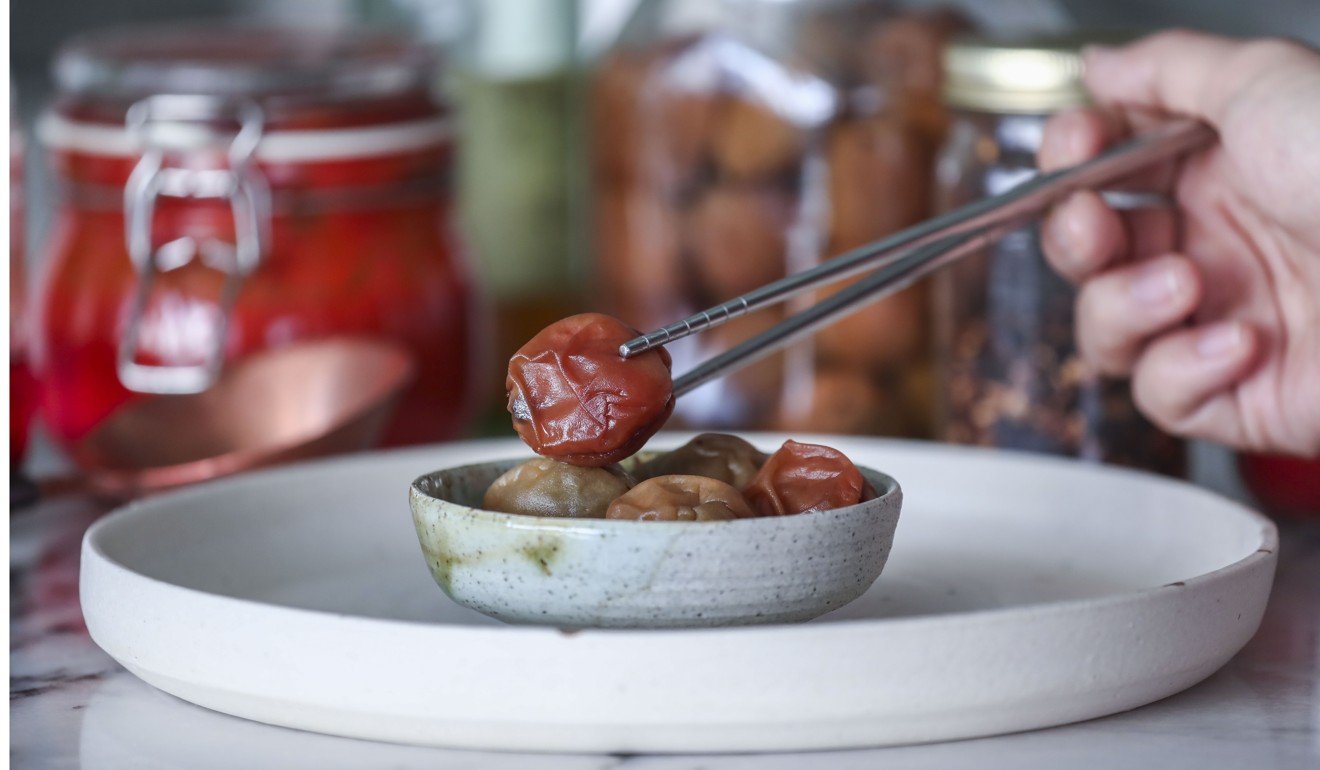
Korean-American chef Mina Park on why dumplings are her favourite food, and the art of fermentation
The Hong Kong culinary entrepreneur and queen of pop-up dining loves to experiment with new ingredients at home, explains why making dumplings is a form of meditation
Being a corporate lawyer while running pop-up dining events in Hong Kong, Asia and beyond cannot have been easy, but that is what Mina Park did for three years until she quit her full-time job at the end of 2016 to focus on her culinary pursuits.
The Korean-American founder of Sook, a private kitchen and pop-up dining concept, did not see this career change coming. But, since her first event at PMQ’s Night Market, in 2014, Park has been involved in many noteworthy collaborations: with Judy Joo of Jinjuu; Buddhist nun Jeong Kwan, who is famous for her temple food; and Toyo Eatery, in Manila, in the Philippines, among others. And last year, Park launched Hawkr, a Southeast Asian takeaway in Quarry Bay.
Mina Park: Hong Kong’s pop-up dining queen
While Park grew up in the United States, her Korean heritage has contributed to the way she cooks. She comes from a family of talented female home cooks, and began helping out in the kitchen preparing banchan (side dishes) at a young age.
In Hong Kong or the US, it’s very hard to find these home-made products. It’s my dream to be able to provide that one day
“[The green plum syrup] is a pretty common Korean ingredient. I made it myself,” Park says. “I use it as a sweetener instead of sugar. It’s fermented so it’s meant to be a lot healthier than sugar. It adds a different depth of flavour to the dishes.”
Fermenting and pickling are an integral part of culinary life for Park.
“For Korean food, everything is fermented and pickled,” she says. “I grew up having kimchi every single day for every single meal, and all the different types of pickles, the doenjang and the fermented chilli paste [gochujang]. The building block of Korean cuisine is fermentation. I always want to do it myself. The fun part is that you don’t really know how it’ll turn out, so it’s a real test of patience.
“You don’t need a lot of equipment; the trick is to use the best ingredients you can find, and good quality sea salt.”

Doenjang is another classic Korean seasoning Park has been trying to make. She uses it in ice cream, giving it a flavour similar to salted caramel, as well as in pesto, to replace cheese as she doesn’t eat dairy often.
They have seven kinds of avocados. I had to try them all!
“Proper doenjang takes two to three years before it’s ready. The ones you can buy in Hong Kong are usually made in three days,” she says. “Whenever I go to Korea, I bring back doenjang that has been traditionally made, unless I’m lucky enough to get home-made ones from somebody I know.
“In Hong Kong or the US, it’s very hard to find these home-made products. It’s my dream to be able to provide that one day. It’ll be expensive, but worth it in terms of the health benefits you get from a proper fermentation process. Most importantly, the flavour is so much more nuanced with home-made products.”
Fermenting is a tactile way of working with food, something that is important to Park as a chef. She draws on the concept of son-maht, which translates as, “‘hand taste’ – the idea that the taste of the food comes from your energy, which is passed through your hands. To me that is a powerful way of thinking, and a very Korean way of thinking.”
Hong Kong chefs experiment with fermentation for flavour and health
As well as cooking for her loved ones, Park’s travels also provide inspiration for new dishes.
“I always leave at least half of my suitcase free to bring back food items,” she says. “Hong Kong is wonderful because you can bring back a lot of things.”
Park’s most recent trip took her to the Philippines, from which she returned with tiny, thumb-length mangoes, custard apple (cherimoya) and giant avocados.
“In Hong Kong, you only see Hass avocados. They are creamy, which makes them great for guacamole, but because they are imported they are usually rock hard when you buy them. In the Philippines they are picked ripe; it’s a totally different experience,” Park says. “They have seven kinds of avocados. I had to try them all!”

Another of her discoveries is kalamay na pinipig, a jade-green rice cake made of unripe glutinous rice, steamed in coconut milk and wrapped inside a banana leaf.
Anything made with sticky rice is a guilty pleasure, Park admits.
“In Korea, we have dduk, which is just rice cake; it’s a chewy, carb-filled, nutrient-devoid snack,” she says with a laugh. “I don’t like the super-sweet kinds, but I do like mochi or the rice cakes I brought back from the Philippines, or the Cantonese tong yuen. The texture is amazing. We describe them as jjolgit jjolgit [“chewy”] in Korean.”
Making dumplings is almost like meditation for me. It’s repetitive – the kneading, the rolling – it’s tactile. I really enjoy making them, almost as much as I like eating them
Does Park have a favourite comfort food?
“Dumplings. These days I’ve been making a lot of vegetarian dumplings. Ones with three kinds of Korean seaweed: kim , which is roasted laver; dashima, or dried kelp; and miyeok, or dried sea mustard.
“Making dumplings is almost like meditation for me. It’s repetitive – the kneading, the rolling – it’s tactile. I really enjoy making them, almost as much as I like eating them. You can just fill it with whatever ingredients you have in the house.”
